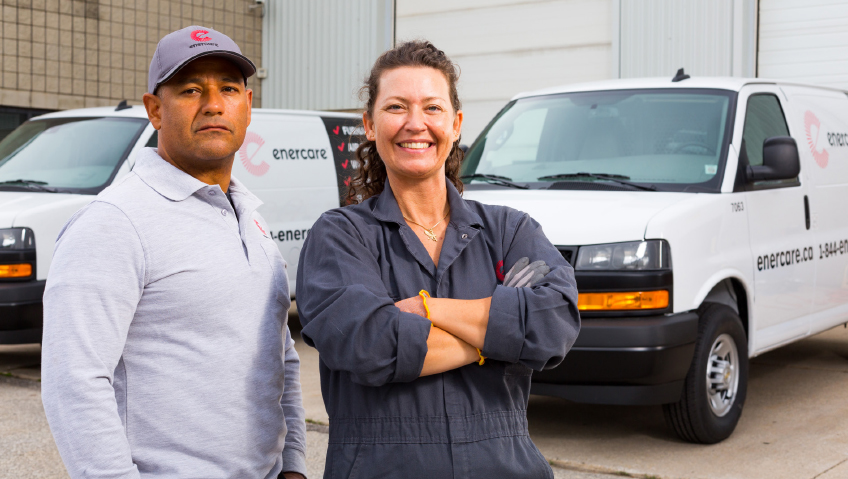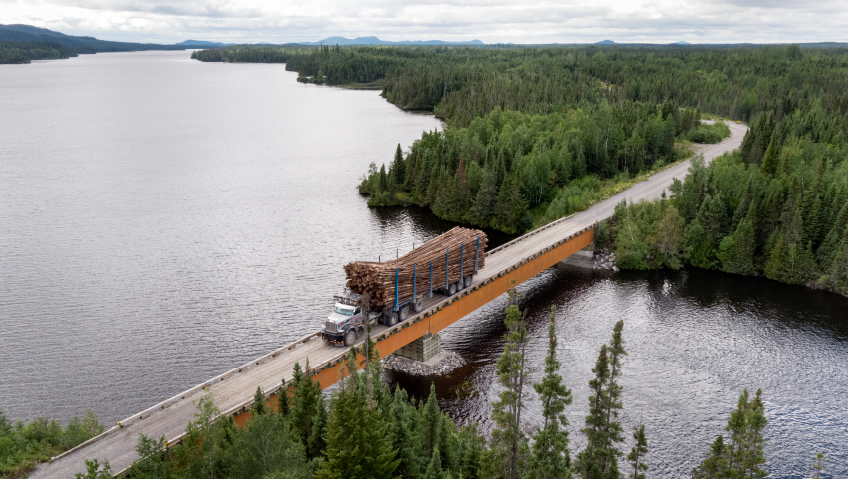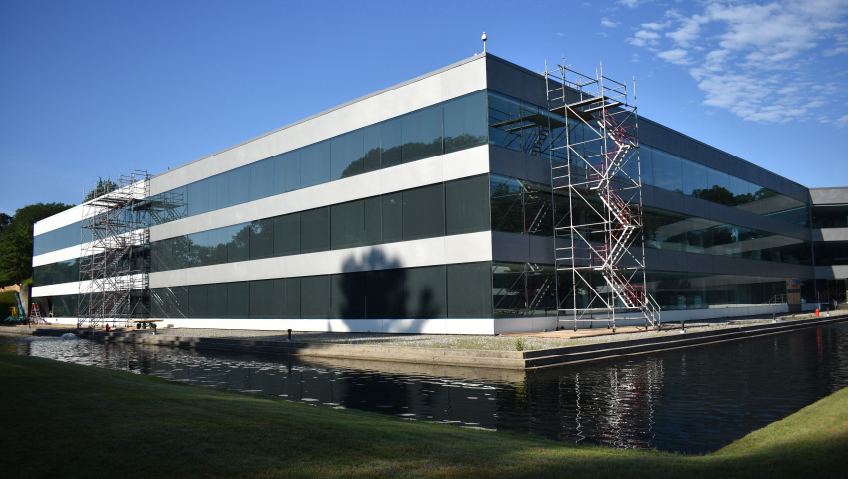Coming together to address a vital energy need in the market, Enercare and Subterra Renewables are working to decarbonize living in the way we interact in our homes, transitioning away from fossil fuel powered systems to renewable geothermal energy. Finalized in Q4 2023, the partnership of these two Canadian companies represents a first-of-a-kind industry relationship aimed at providing quality products, service, and results to clients, all while helping to reduce our carbon footprints.
A fully vertically integrated heating and cooling solution geothermal utility provider, Toronto-based Subterra has operated for 25 years, and in 2023 they were listed as fastest growing company by The Globe and Mail. In the new collaboration, the company will provide geothermal drilling and exchange systems installations while Enercare will provide ground-source heat pump technology using its “Enercare Advantage” program.
With homes and buildings accounting for almost 20 percent of national greenhouse gas emissions and up to 60 percent in urban Canadian centres, according to the Government of Canada, it’s vital to fast-track building electrification with geothermal renewables.
Subterra and Enercare’s collaboration will aid new construction multi-residential and low-rise developments in meeting net zero GHG emission reduction targets, aiming to significantly reduce non-renewable energy use and GHG emissions Canada-wide.
“The objective of our partnership was to fulfill an unmet market demand—one that no single entity had successfully addressed for both developers and end users,” says Nolan Leiska, Vice President, Builder Division, Enercare. “Our goal is to decarbonize living by transforming how we interact within our homes. Through our program, in collaboration with Subterra, we empower developers to offer the most energy-efficient products in their residential units, benefiting both developers and end users.”
Currently there is no firm that offers a central plant system and a geothermal system as well as in-suite equipment, which is what the partnership provides to developers.
“This is a first of its kind industry partnership,” adds Jessica Rowe Bald, Senior Vice President and Partner, Subterra Renewables. “It’s designed to drive adoption of renewable technology through implementing a service that is fully circular because we’re providing both the utility stream of energy as well as the in-suite equipment maintenance and operation stream.”
With the help of this historic partnership, geothermal heating and cooling will transform Canadian homes, giving Canadians the ability to live a greener lifestyle feasibly and cost-effectively. Believing residents shouldn’t have to choose between economical and ecological lifestyles, this unique initiative offers energy-as-a-service customers a hassle-free, affordable choice for building a reliable geothermal system.
Enercare Inc., a major provider of home and commercial services in Canada with more than 65 years of experience in the business, is dedicated to helping Canada go green by lowering greenhouse gas emissions from buildings and residences via water heaters, heat pumps, furnaces, air conditioners, water treatment, and associated goods and services, such as electrical and plumbing Canada-wide.
With the biggest drilling fleet in North America, Subterra Renewables is a geothermal exchange utility firm that uses the most durable and energy-efficient heating and cooling technology available worldwide. The company designs, builds, owns, and operates unique geothermal exchange systems on demand. Being a pioneer in the decarbonization and sustainability movements, its best practices complement government ESG programs, accelerating the approval process for new construction and paving the way for Net Zero. Serving all of North America, Subterra offers its energy-as-a-service utility concept, Aura™.
“From the Subterra perspective, we’re rapidly growing,” says Rowe Bald. “We are expanding, and we continue to expand organically in the Ontario market, but we’re also expanding into the U.S. to diversify our portfolio. For the purposes of this partnership, we’re focusing on the Canadian market, but Subterra’s mandate is North America-wide.”
The unique partnership between the two specialized companies was really designed to address the challenge in the marketplace, she adds. “And it’s to provide that ease of access and affordable rates to adopt renewable technology through this partnership.”
Leiska agrees. “This is where our core principles come into play. Enercare aims to introduce affordable sustainability, actionable intelligence, and resiliency—all essential aspects,” he says. “This partnership encompasses various facets of our mission, which is why it initially appealed to us. However, its primary objective is to deliver exceptionally efficient products to consumers at an affordable price.”
It’s this shared value system of moving toward clean energy and away from fossil fuel powered systems that truly makes this collaboration both innovative and logical.
“That’s where Enercare and Subterra are really well aligned,” says Rowe Bald. “Here in Canada, we have some great resources that are in the conventional energy sector, in oil and gas. Our mission is to repurpose those resources to drive renewable adoption, so we’re growing through organic growth, but we’re also looking at the resources that we have in labour and technology and equipment to repurpose that technology and bring it to the renewable side.”
From Enercare’s perspective, the company was born out of the gas company, and is often confused for the utility, adds Leiska. “We manage a substantial number of gas-fired appliances, and as we contemplate the future, we recognize that this isn’t the ultimate solution.”
And that drive toward sustainability is being requested more and more often by builders and homeowners, he adds, with the perfect example being providing heat pumps to developers. Geothermal heat pumps, also known as ground source heat pumps, use subterranean pipework to circulate water—or antifreeze solution in colder climates—to transfer heat to and from the earth. Because of their great efficiency and capacity to provide heat without the need for fuel purchases, GHPs are widely recognized as having advantages for reducing building energy expenses, and generate no emissions on-site.
From a groundbreaking study funded by the U.S. Department of Energy, Office of Energy and Efficiency and Renewable Energy, Geothermal Technologies Office, impact analysis findings show that there are considerable savings to be had in grid expenses, CO2 emissions, and building energy use. These findings also show that GHPs in conjunction with weatherization in single family homes are essentially a technology and technique for reducing electric grid costs when widespread deployment levels are reached.
“We know that people want to adopt this technology,” says Leiska. “It’s truly just trying to educate people on what a heat pump is, how it operates, and how it affects the home.”
Unfortunately, not a lot of people are able to navigate those waters on their own, which is where Enercare and Subterra come in as the experts in understanding the impact of the home from both a comfort perspective and as an operating expense.
“From a decarbonization perspective, a heat pump operates entirely on electricity. This allows you to transition away from gas as your primary heat source and use it only as a backup, if necessary, during the coldest days of the year.” Leiska himself has a heat pump in his house and his electricity bills have gone down along with his gas bills “quite a bit.” He’s also noticed a difference in comfort in a positive way.
Going to renewables is definitely a transition, adds Rowe Bald, but an excellent one to undertake. “Transitioning to air source is a fantastic step, and ground source heat pumps would be the next level,” she says. “The additional benefit of ground source heat pumps is there’s a reduced load requirement on the electrical grid. When we’re talking about transitioning to renewables, we’re really talking about electrification.”
That means the grid needs to be able to sustain the conversion to electrification. Ground source heat pumps support that transition because they bring down the peak demand on the grid.
“That’s really the key with the ground source heat pumps—because they’re operating at an ambient temperature, the electrical load is significantly less on ground source than it is on air source.”
Ultimately, it all comes down to education, whether that’s for homeowners, businesses, or builders.
“It’s education first, but then it’s, ‘what are the next steps?’” says Leiska. “Our firms serve as a comprehensive one-stop shop, facilitating the necessary conversation. Once you grasp the technology and its functioning, our role is to guide you through the customer journey—from creating a geothermal source by drilling into the ground to installing our heat pump equipment in the suites, ensuring the building operates seamlessly.”
It’s always going to be about education, adds Rowe Bald, but the headline is about adoption. “It’s about these technologies. The equipment has been around, the technology has been around, and this partnership brings it together and that adoption can happen. It’s about taking action.”
And companies are starting to get on board: Subterra and Enercare have had prominent developers come to them and ask how to electrify their building, she says.
With the combined strengths of Enercare’s experience in providing heating and cooling solutions across Canada and Subterra’s extensive experience in geothermal drilling, geo-exchange installations, and operations management, this initiative will offer Canadian consumers and developers cost-effective renewable energy options that will enable them to fully embrace sustainability.
“By introducing sustainable green energy to homeowners—by way of actionable intelligence that boasts greater resilience—we contribute to minimizing the environmental impact,” says Leiska. “Our goal is to empower customers.”






